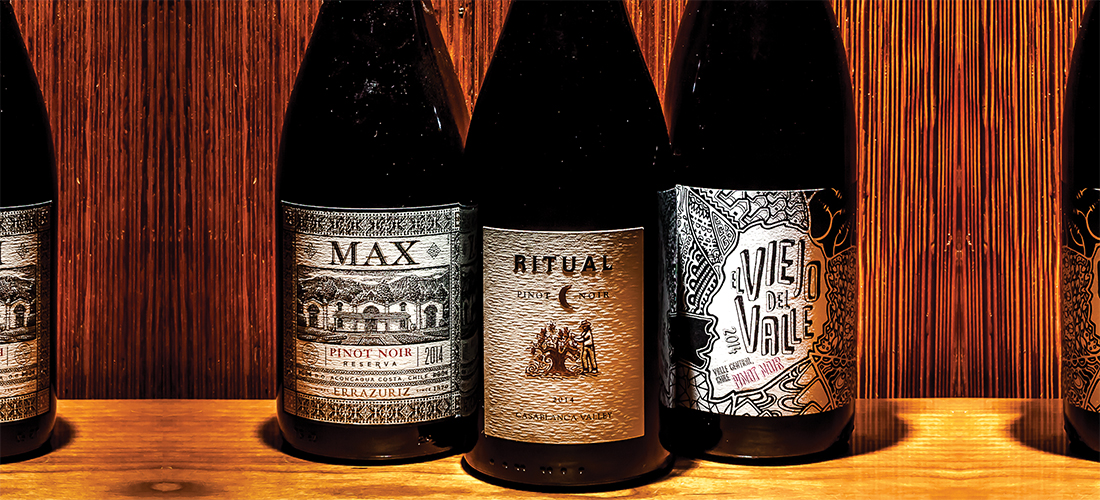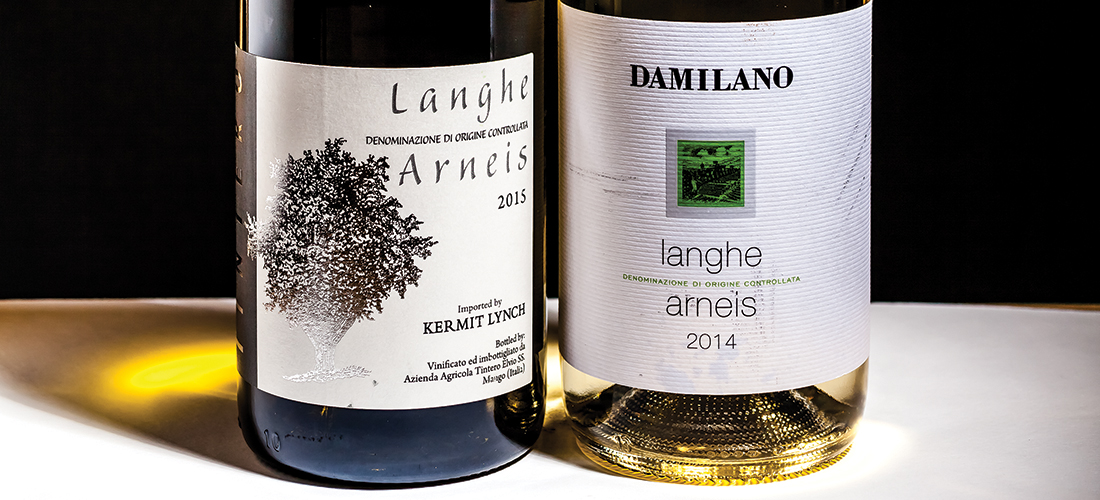Chileans find surprising success with a difficult grape
By Robyn James
Pinot noir: the Holy Grail of wine grapes. It’s finicky, it’s elusive, and it may be the best wine you ever had, or the worst. As the primary red grape of Burgundy, France, be prepared to spend $50 for a low-level basic Burgundy and sell your car to try the best.
It’s a joke in the wine industry that there is no such thing as a “good value” pinot noir. It’s painstaking and expensive to grow this grape that needs vines with age and lower yields at harvest.
Many love Oregon; California gets a lot of play, and New Zealand has made great strides with the grape.
Ever considered pinot noir from Chile? Probably a resounding no. Fifteen years ago I sampled some Chilean pinot noirs and thought, hey folks, stick to chardonnay, cabernet and carménère.
Pinot noir takes time for vines to age, and winemakers need to find very site-specific areas for the grapes that need a cooler climate, preferably with a maritime influence. Fast forward 15 years, and winemakers have zeroed in on the Casablanca, Maule and Aconcagua Valleys on the coast, brought pinot noir clones from Burgundy and hired Burgundian consultants. The vines are older now, and Chile is off and running with pinot noir. Although pinot noir is only 3 percent of Chile’s total plantings, it has increased 170 percent since 2006. Chilean winemakers have embraced the challenge.
Eric Monnin, a French enologist with experience working in Champagne and Burgundy, splits his winemaking duties between Chile and France. He is the head winemaker for the Boutinot Company and supervises making the El Viejo del Valle pinot noir. He and his team discovered a very old block of pinot noir beneath a volcano in the Maule Valley and picked it to produce this little gem that sells for a ridiculous $9. The interesting label is a reproduction of Chilean street art, and if you look closely you can find the profile of the “Old Man of the Valley” hidden in the art. They describe their El Viejo pinot as “deliciously long, bright, textural pinot from cold, stony vineyards deep in the Maule Valley. Some oak barrel fermentation adds complexity, depth and warm vanilla notes to the finish.”
Don Maximiano Errazuriz founded his winery in 1870 in the Aconcagua Valley. His fifth generation descendants now run this natural quality winery and have named their reserve lines “Max” in his honor. Already located in a great pinot location, a visit to Chile should include Errazuriz. The estate is stunning, and their techniques are first class. This wine was aged in French oak barrels, 15 percent new, for 12 months before release. One of the first Chilean wineries to gain success with pinot noir, the current vintage scored a whopping 90 points from The Wine Spectator. They describe it as “a suave red, with a silky mouthfeel and medium-grained tannins behind the flavors of cherry, plum and hazelnut. The spicy finish is long and rich, revealing accents of sandalwood.” That’s a description and score worthy of a $65 Oregon pinot noir. This winner from Chile is about $17.
August Huneeus, born in Santiago, Chile, has one of the most impressive résumés in the wine industry. He became CEO for Concha Y Toro at a very young age, then came to the United States for a long, successful career. He owns several prestigious wineries in California such as Quintessa (where he resides), The Prisoner, Illumination and several others.
In 1989 Huneeus and his wife, Valeria, decided to venture back into Chile and founded the Veramonte Winery in Casablanca Valley. Their Ritual pinot noir is hand-harvested from the coolest vineyards of their estate, put through a malolactic fermentation and aged in French oak barrels for 12 months. The Wine Advocate gave this $18 wine 89 points, and noted that, “This aims at showing what Casablanca can do as a valley in pinot noir. There are more fruit than herbal aromas here, and this shows nice ripeness, combining aromas of sour cherries with lactic hints and bare traces of spicy oak. The palate is medium bodied with fine tannins, good freshness and the final granite bite in the finish with the oak much better integrated.”
Incidentally, Chile has the same ability as California to allow up to 25 percent of another grape into the wine without noting it on the label. However, all three of our pinots recommended are happily 100 percent pinot noir. “A” for effort, Chile! PS
Robyn James is a certified sommelier and proprietor of The Wine Cellar and Tasting Room in Southern Pines. Contact her at robynajames@gmail.com.


